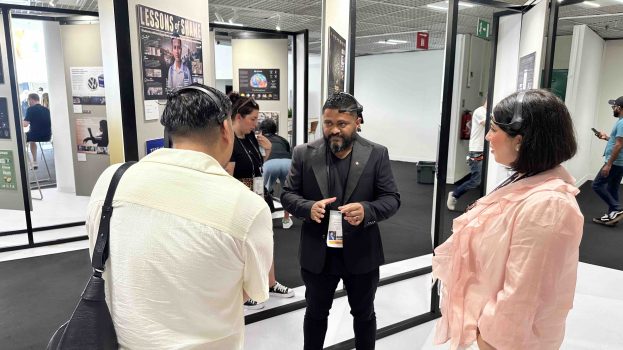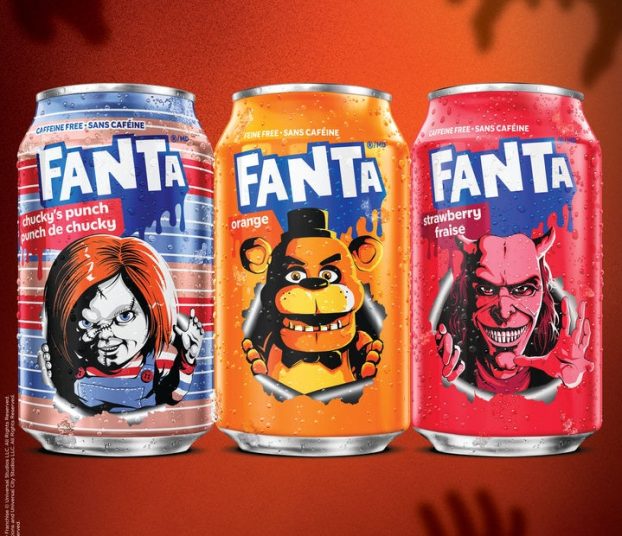Let’s be honest – multicultural marketing could use a refresh. For years, it’s mostly focused on newcomers, especially in those early settlement years. But what about their kids? Their grandkids? What about the second- and third-generation Canadians who might not speak the language fluently, but still represent their culture with pride?
That’s where “neocultural marketing” comes in. It’s not about ticking boxes for ethnicity or language. It’s about building lasting relationships with people who live at the intersection of cultures – blending tradition and modern life in ways that are entirely their own, and which are expressed through food, festivals, streetwear, music and content.
Take Adidas’s Tang suit-inspired track jacket. It merged traditional Chinese fashion with modern streetwear – and it blew up online, racking up over 7.9 billion views on RedNote and 27 million TikTok posts under the hashtag #爱豆体验馆 (#IdolExperience). It’s a perfect example of how rooted cultural design can resonate globally when done right.
According to Vividata’s 2024 Multicultural Consumer Study, 63% of Gen Z new Canadians say they feel “most seen” by brands that reflect their cultural background. Over 70% of second- and third-gen respondents actively engage with heritage-inspired content on TikTok, YouTube and Instagram. In other words, this isn’t niche, it’s now mainstream. Meanwhile, the StatsCan 2022 Canadian Social Survey adds another layer: nearly 80% of immigrants are much more likely than non-immigrants to say their ethnic or cultural origins are important to them.
Canada is a place where neocultural marketing can thrive. With over 20% of the population being newcomers (and multi-generational households becoming the norm in many communities, especially South Asian ones) there’s a real chance to do something meaningful. When brands mix the current “Buy Canadian” movement with real cultural depth, it hits differently. It connects across generations, and that’s where the magic happens.
This approach also doesn’t stop at our borders – it’s becoming a blueprint for the U.S. as well. Hispanic, Chinese, and South Asian communities are all growing across the States, and brands are facing the same generational shifts we’re seeing here. These audiences don’t fit neatly into traditional “multicultural” boxes. They navigate “in-between” spaces, speak multiple languages (or just English), and expect brands to engage with them in ways that feel real, not rehearsed.
Shein has successfully tapped into Chinese and South Asian American millennials by blending cultural heritage with modern fashion. Through micro-influencer campaigns, culturally relevant drops, and traditional patterns reimagined for Gen Z, Shein connects with neocultural consumers who value both identity and trend. In 2023 alone, the apparel brand partnered with over 6,000 U.S.-based influencers, driving high engagement on TikTok and Instagram – proof that authentic cultural cues can fuel massive reach and resonance.
And Procter & Gamble’s “The Name” campaign from 2022 tackled the mispronunciation of Asian names to spotlight cultural identity and respect. Launched during AAPI Heritage Month in the U.S., “No Name” featured a moving short film about a Korean American girl and was supported by educational tools. The campaign generated over four billion impressions, resonating strongly with second- and third-gen Chinese and South Asian Americans navigating hybrid identities.
Neocultural marketing isn’t a trend. It’s a strategy for the world we live in now. It’s not about surface-level diversity anymore. It’s about building stories, products, and experiences that feel authentically reflective of people’s lives. The brands that get this right will build stronger loyalty, drive deeper growth, and stay relevant in a changing world.
Jensen Tsoi is the president of Dyversity Communications
Image courtesy of Unsplash
























